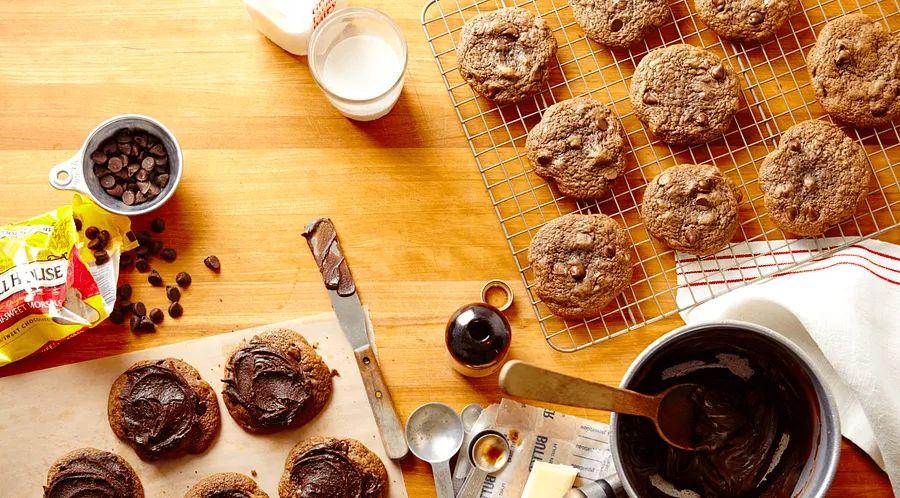I Never Follow a Cookie Recipe Exactly — Here’s What I Always Tweak and Why

I’m all for the idea that you should 'never say never,' but I can confidently say I almost never follow a cookie recipe to the letter. Whether it’s from a chocolate chip bag or a trusted cookbook, I always make at least a couple of changes.
This isn’t because I doubt the recipe’s results, but because experience shows me that adjusting two crucial ingredients will usually lead to cookies that taste like they came from a pro. It’s a small tweak that will make everyone wonder, 'Wow, what’s the secret to these amazing cookies?'
They might not figure it out, but you’ll know exactly why they taste so good.
The Two Ingredients I Always Amp Up
As a recipe developer with plenty of time spent in test kitchens, I know that most cookie recipes are designed to appeal to as many people as possible. The desire to please in recipe writing, especially in baking, is totally understandable. Baking can be intimidating, and you don’t want to scare people away with a complicated ingredient list, especially for something as classic as a chocolate chip cookie. The goal is to ensure success from the start. But in trying to keep things universally palatable, we’ve unintentionally created a 'safety zone' for two essential ingredients: salt and vanilla extract.
My advice? Step outside the safety zone.
Salt
For a recipe that makes 2-3 dozen cookies, you’ll typically find ½ teaspoon of salt. Sometimes it’s as little as ¼ teaspoon, or occasionally a full teaspoon — but ½ teaspoon is the usual. When I see that, I always double it, and I might even sprinkle some flaky sea salt on top for an extra touch. I'm not the first to tell you that salt makes sweetness pop — they’re one of the best pairings in the culinary world. If you’ve been baking buttery shortbread cookies without thinking much about the salt, try adding a little extra and watch the magic happen.
That said, it’s important to pay attention to the type of salt your recipe calls for. You’ll mostly encounter three types in baking: regular salt, kosher salt, and flaky salt (which is usually reserved for finishing). When a recipe just says 'salt,' it typically means regular table salt. Some bakers prefer table salt because its finer grains mix more easily into doughs and batters, and it’s very commonly used in baking recipes. However, many home cooks — myself included — tend to grab the kosher salt whenever we’re cooking.
Keep in mind that 1 teaspoon of table salt is saltier than 1 teaspoon of kosher salt, thanks to the difference in granule size. So, if a recipe calls for table salt and you're using kosher, you'll need to be a little more generous with your measurements. On the flip side, if the recipe asks for kosher salt and you're using table salt, just be a bit more cautious with how much you add — even if you’re already planning to increase the salt from the original amount.
If a recipe calls for a sprinkle of flaky sea salt (often branded as Maldon) to finish your cookies, and you don’t have it on hand, I would strongly advise against substituting it with regular table salt or kosher salt. They won’t give you the same effect. However, if you're already increasing the salt in the dough itself, you should still be in great shape.
Vanilla Extract
The majority of cookie recipes you come across — whether clipped from a magazine, found in a cookbook, or stumbled upon online — will call for 1 teaspoon of vanilla extract. No matter the batch size, this seems to be the standard. I suspect this 'safety zone' for vanilla came less from fear of going overboard and more from wanting to avoid using too much of an expensive ingredient. I get it; if a recipe calls for a hefty amount of something pricey, I’m usually inclined to skip it as well.
Here’s the thing: doubling the vanilla amount can do wonders for your cookies' flavor. Whether you’re baking cut-out cookies, peanut butter cookies, chocolate chip, oatmeal, or anything in between, enhancing the vanilla will deepen the richness of the flavor in a way that's totally worth the extra splurge. It’s a subtle yet impactful change that will definitely make your cookies stand out.
The only exception I can think of is when a recipe calls for more than one flavored extract. If you're using both vanilla and almond extract (or any other flavors), it's best to stick with the recommended measurements to avoid letting the vanilla flavor overpower everything else.
With that said, I encourage you to try amping up these two essential ingredients in your next batch of cookies. If you don’t notice a difference, I’ll gladly owe you a bottle of vanilla.
Evaluation :
5/5



